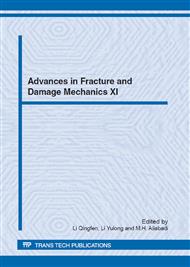p.477
p.481
p.485
p.489
p.493
p.497
p.501
p.505
p.509
Formability Evaluation of Non-Crimp Carbon Fabric by Non-Contact 3D Deformation Measurement System
Abstract:
Non-Crimp Carbon Fabric (NCF) consists of unidirectional plies which are kept together by stitching yarns arranged in a number of different orientations relative to the fabric production direction. It is reported that NCF possesses excellent drape performance compared to woven fabrics. However there is not a clear criterion of a drape evaluation on the drape characteristic of the NCF. In addition, it is not clarify that stitch pattern and stitch tension influence on the drape characteristic of the NCF. Moreover, in existing bias extension test, measurement of shear angle is based on the pin-jointed net (PJN) approximation. The PJN approximation doesnt takes into consideration the fiber sliding and the effect of the stitched parameters of the NCF. In this study, the bias extension test based on the measurement of shear angle by non-contact 3D deformation measurement system was conducted to evaluate the drape performance of the NCF. We made a proposal of the formability evaluation index based on the measurement results. Moreover, the 3D draping tests were conducted onto hemisphere geometry and regular tetrahedron, in order to verify availability of the formability evaluation index. The availability of the formability evaluation index was verified.
Info:
Periodical:
Pages:
493-496
Citation:
Online since:
November 2012
Authors:
Price:
Сopyright:
© 2013 Trans Tech Publications Ltd. All Rights Reserved
Share:
Citation:


